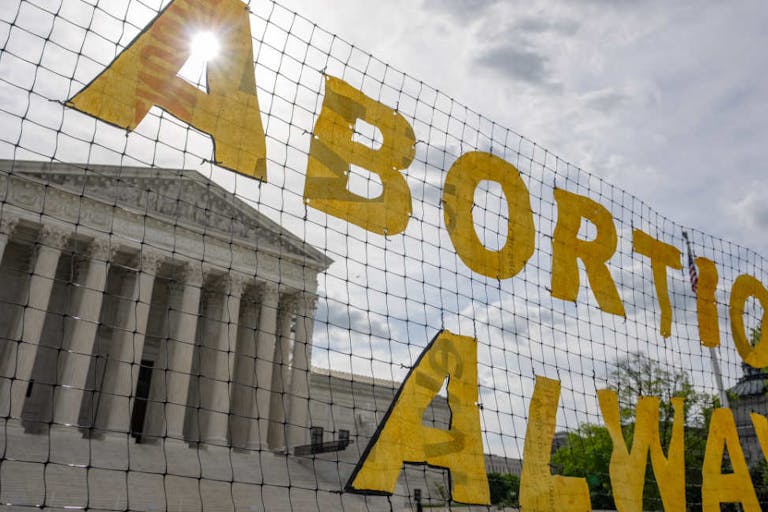
A growing number of Americans call themselves ‘pro-choice’ – but what’s really behind it?
Nancy Flanders
·
Analysis·By Catherine Livingston, PhD
U.S. abortion rate falls as more mothers choose life and fewer women become pregnant
A recent report that the abortion rate has fallen nationwide has pro-lifers celebrating more mothers choosing life, while abortion advocates credit affordable birth control. Let’s examine which version of events best fits the data.
Government figures show that in the past three years, the decline in abortion totals just over 85,000. In 2010, the percentage of pregnancies that ended in abortion was 17.92% in 2010, and by 2013 it was 16.2% in 2013. What the numbers show is that 74.3 percent of the abortion decline is due to fewer women choosing abortion. Knowing the why more women are choosing life though is not something that the data speaks to.
The other 25.7 percent of the abortion decline is explained by fewer women becoming pregnant. Factors that impact this include fertility rates, consistency of contraception use, and frequency of sexual activity. Overall from 2010 to 2013, pregnancies were down 3.2 percent while abortion was down 12.5 percent.
However, the caution comes with two significant factors not included in the national data. First, abortion counts only include surgical abortions and RU-486 (the abortion pill). While these may account for a majority of abortions, these numbers do not include the morning after pill or multiple other birth control methods that the Food and Drug Administration classifies as birth control, but which have abortifacient properties.
Article continues below
Dear Reader,
In 2026, Live Action is heading straight where the battle is fiercest: college campuses.
We have a bold initiative to establish 100 Live Action campus chapters within the next year, and your partnership will make it a success!
Your support today will help train and equip young leaders, bring Live Action’s educational content into academic environments, host on-campus events and debates, and empower students to challenge the pro-abortion status quo with truth and compassion.
Invest in pro-life grassroots outreach and cultural formation with your DOUBLED year-end gift!
Still a bigger problem with the data is the that five states do not report abortion data at all.
Topping the list of problematic states is pro-abortion California. The state does not have any laws mandating that abortion providers report the number of abortions they perform. As the most populous US state, with 38 million residents, it also has a host of pro-abortion laws in effect. The state is controlled by a pro-abortion governor and legislators, and even has a law that every health care plan in the state (including churches) must cover abortion. The state even pays for abortions under its state Medicaid plan, Medi-Cal. With blatant pro-abortion laws and leaders, few abortion restrictions, and free abortions, the elimination of data from the state in national reports makes it problematic for drawing conclusions.
Other states that don’t mandate abortion reporting include, Maryland and New Hampshire. Additionally, New Jersey does not track its abortions (but public assistance pays for them for qualifying poorer residents), and Wyoming says its abortions are too low in number to be included in statistical data, so those are not reported.
While there’s no question that pro-lifers have reason to celebrate reduced abortions, there are still many missing pieces to the data–and, in fact, missing data. Until every state reports abortions, we won’t have a complete picture. That said, the picture we see is an encouraging one where abortion rates have been on a steady decline for about 30 years.
Live Action News is pro-life news and commentary from a pro-life perspective.
Contact editor@liveaction.org for questions, corrections, or if you are seeking permission to reprint any Live Action News content.
Guest Articles: To submit a guest article to Live Action News, email editor@liveaction.org with an attached Word document of 800-1000 words. Please also attach any photos relevant to your submission if applicable. If your submission is accepted for publication, you will be notified within three weeks. Guest articles are not compensated (see our Open License Agreement). Thank you for your interest in Live Action News!

Nancy Flanders
·
Analysis
Nancy Flanders
·
International
Angeline Tan
·
Pop Culture
Cassy Cooke
·
International
Cassy Cooke
·
Analysis
Cassy Cooke
·
Human Interest
Catherine Livingston, PhD
·
International
Catherine Livingston, PhD
·
Newsbreak
Catherine Livingston, PhD
·
Human Interest
Catherine Livingston, PhD
·
Human Interest
Catherine Livingston, PhD
·